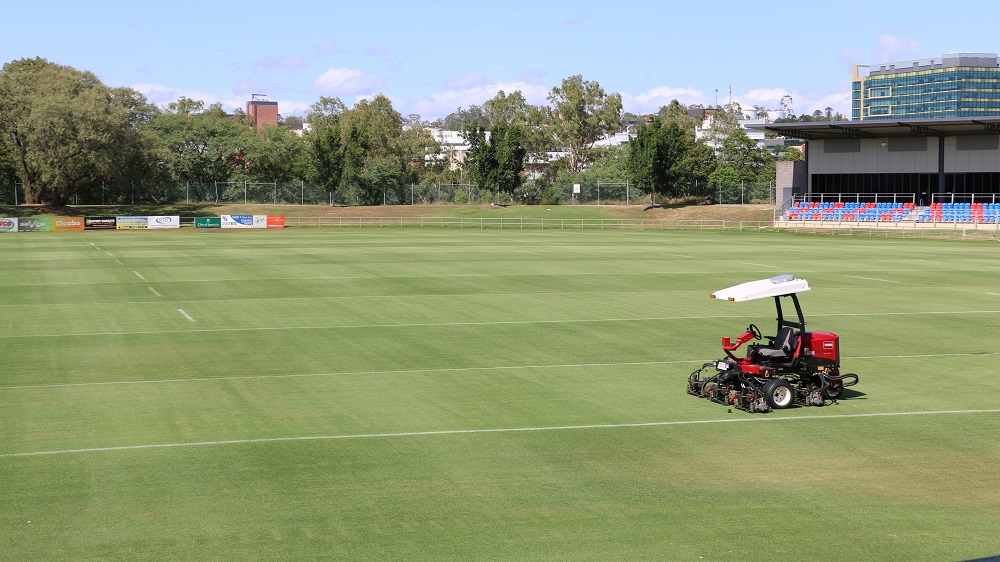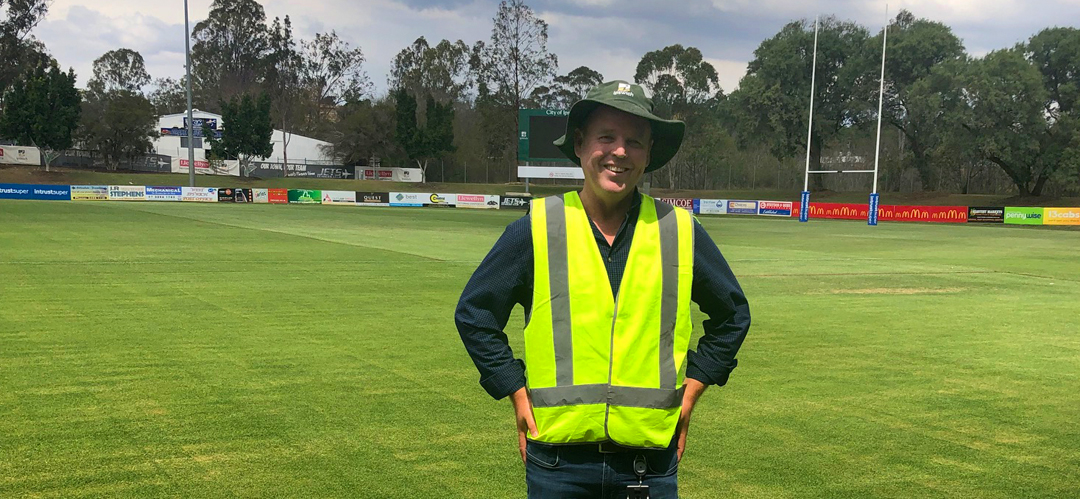
James Hilyard is Ipswich City Council’s Infrastructure and Environment Department, Acting City Maintenance manager.
James is a horticulturalist, arborist and holds a masters degree in sustainability.
In this month’s column, James shares his tips on how to get your lawn healthy and back in shape as the weather warms up and the grass takes off.
Chances are your lawn will be looking a bit worse for wear coming into spring.
But over the next month, your lawn will start bursting back to life.
Having a nice lawn is a challenge in our climate but the benefits are real and often underestimated.
Grass is vital in the urban environment and provides many useful services that man-made structures and surfaces can’t provide.
Grass cleanses our environment by filtering our water, it reduces carbon dioxide and cools our surrounds.
So, how do we have a nice lawn in 40-plus degree heat in the middle of a drought in the driest continent in the world?
I believe it is possible, and it can be done without wasting water.
The best tip I can give you is to mow more often.
You will save water and have a healthier lawn.
Did you know?
- Grass has the same cooling effect as open water or a pool but loses 40% less water through evaporation
- The average home’s lawn is twice as effective in providing cooling services as the average house’s ducted air conditioning system
- Artificial grass is 40% hotter than real grass
- Lawns can break down organic pollutants and are a good way of recycling water
- Lawns reduce ambient noise making cities quieter and more liveable
Not to mention the aesthetic benefits of nice green grass to play on.
Here is how to get the best lawn you can for the least amount of water
Mow more often
You should never cut more than a third of the height of your grass off at any one time. The more you mow the more lateral growth and coverage you will get from your grass. You will have a healthier and deeper root system.
Use a mulching mower
Every time you take a catcher full of grass away from your lawn you are taking away water and nutrients too. A mulching deck will shatter the clippings and let them fall back to the soil to be recycled.
Water at night or very early mornings
This will reduce evaporation, less drift from winds and more than likely better pressure too.
Water well but less frequently
If you water for a short time and often, your lawn will not need to put down a deep root system and will only have access to water in the first few centimetres of soil, leaving it prone to wilting.
Deep watering with gaps between events will allow the grass roots to go deep looking for moisture, this will allow them to draw on moisture deep within the soil profile thus being able to withstand dry periods for longer and be healthier.
Fertilise your lawn little and often
Light applications of a complete fertiliser will maintain healthy and sustainable growth. Avoid just using urea or other fast fix, quick hit fertilisers that only promote leaf growth and greening. This is like giving sugar to kids and you will have the equivalent lawn tantrum on the come down. Make sure your fertilizer has Nitrogen, Phosphorus and Potassium as well as trace elements.
Read also:
>>> Gardening with James Hilyard: How to fire proof your garden
>>> Gardening with James Hilyard: No room to garden? Think miniature
>>> Gardening with James Hilyard: Winter pruning
>>> Gardening with James Hilyard: Selecting the right plants for your yard
>>> Gardening with James Hilyard: Mulch, Mulch, Mulch

Ipswich City Council keep the city’s more than 100 sport and recreation facilities, catering to over 150 clubs and organisations, up to peak condition.
The mowing of the city’s active sporting fields is done on a weekly basis. The grass is maintained at the height of 40mm with the exception of fields in which cricket is played which is maintained at 30mm.
The fundamentals are the same as lawn care at home – just on a much bigger scale.
For example, last year at North Ipswich Reserve, a double scarification removed the old dead growth and promoted new growth, with a few top dresses to level the field.
Aeration also helps reverse the compaction that comes with a full season of footy.
A stringent nutrition program includes granular fertiliser every three months, liquid fertiliser in between for quick absorption, and extra organic and seaweed-based products.
Potassium and other liquids have also been added for root strength.
During winter the field will be oversown with rye grass to boost the colour and protect the couch.
Plus, it’s mowed twice a week and irrigated at least three times a week to keep the grass in immaculate condition.
It wouldn’t look as good with the dry weather, if it wasn’t for the crews looking after it and taking pride in it.



What’s your pick of the residential lawn fertilizers out there? What do you use at home?